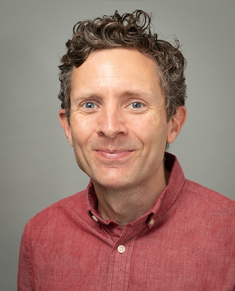Atomistic Origins of Heat Capacity and Thermal Conductivity

Alan McGaughey, PhD
Carnegie Mellon University
Abstract: There has been tremendous progress in the last 20 years in the calculation of thermal conductivity. First principles-driven approaches can now make predictions that agree with experimental measurements for a wide range of materials. I will first discuss heat capacity, a key input to any thermal conductivity calculation. The standard approach is to calculate heat capacity as a harmonic quantity. Doing so leads to the Dulong-Petit law at high temperatures, where the heat capacity is temperature independent. Deviations from this law are common, yet are challenging to calculate. We have developed a new lattice dynamics-based approach for calculating a fully anharmonic heat capacity that will improve the accuracy of high-temperature thermal conductivity calculations. I will then explore thermal transport in crystals that contain rotating molecules (e.g., C60 and sodium superoxide, NaO2). Because the atoms in such materials do not have well-defined equilibrium positions, the standard lattice dynamics-based approach for calculating thermal conductivity cannot be applied. Instead, we use molecular dynamics simulations. Our results show that the thermal transport contains features of both crystals and disordered materials, and suggest strategies for building thermal conductivity switches driven by external stimuli.
Bio: Alan McGaughey is the Trustee Professor of Mechanical Engineering at Carnegie Mellon University. He holds B.Eng., M.A.Sc., and Ph.D. degrees in mechanical engineering from McMaster University, the University of Toronto, and the University of Michigan, and was a post-doc at the University of Florida. His research group has been supported by NSF, DOE, AFOSR, ARO, and DARPA. He is a fellow of the ASME and the APS. He won the Air Force Office of Scientific Research Young Investigator Program award, was a Harrington Faculty Fellow at the University of Texas at Austin, and won the Teare Teaching Award and Outstanding Mentoring Award at CMU. He has been voted "Professor of the Year" by the CMU mechanical engineering senior class three times. He has given invited talks and seminars on modeling nanoscale transport phenomena across the United States and in Canada, Chile, China, France, Japan, Korea, and Singapore.